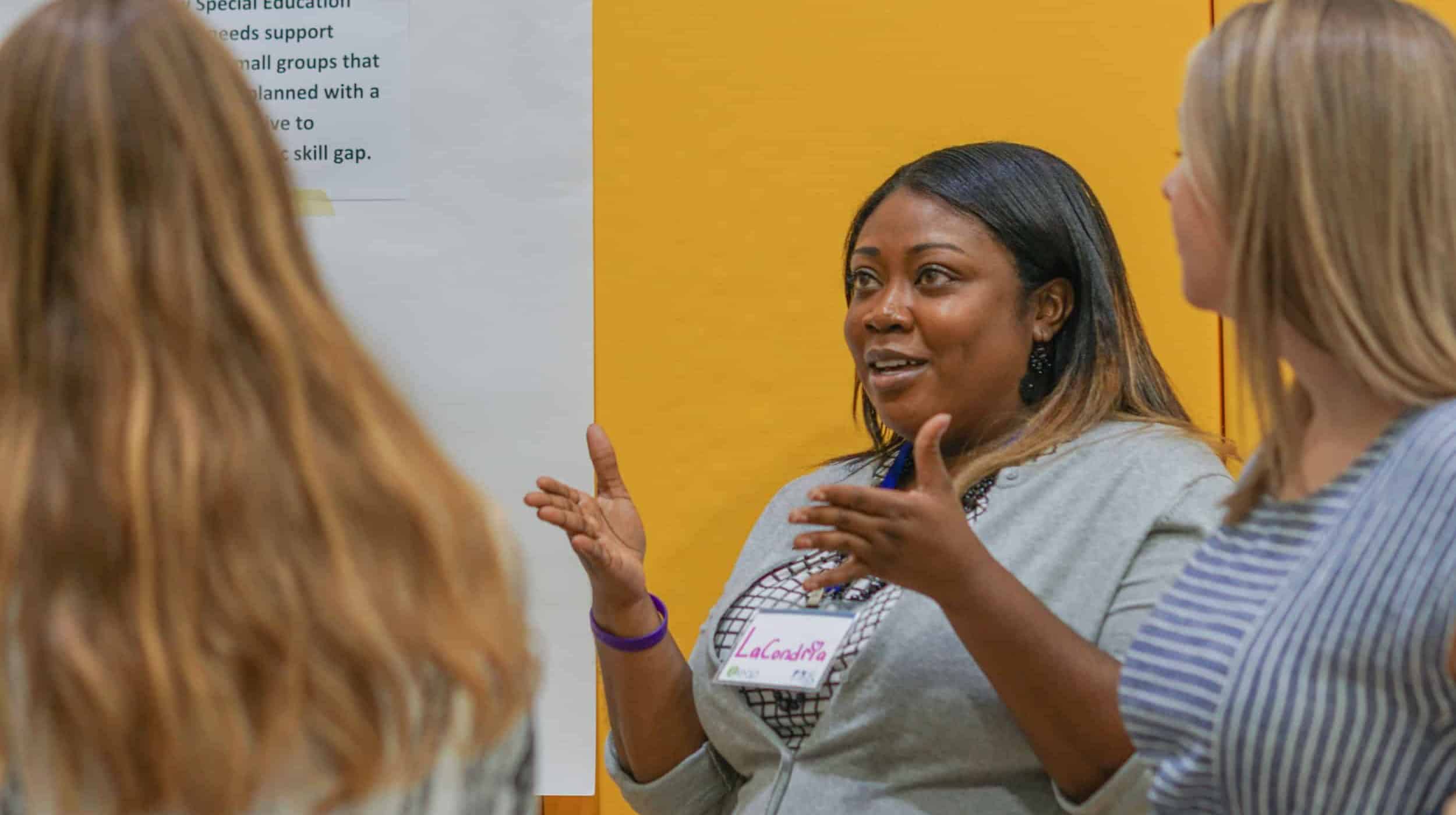
Knowledge & Beliefs
Students succeed when teachers build and draw from deep knowledge. So, we assess the knowledge and beliefs that teachers and leaders build from professional learning as a component of impact.
Most professional development doesn’t give teachers enough opportunities to adapt to rising standards or to practice with the quality materials they use every day. The resulting gap in what teachers know and still need to learn is having serious consequences for students.
The Need
Strong teaching has an unmatched effect on student success, but it has to be actively developed. Many school systems need greater capacity to address the depth of content teachers learn, which is why curriculum-based professional learning is so important.

77% of teachers
say they are not fully prepared or not at all prepared to be effective in their first year of teaching

94% of teachers
say it has become harder to do their jobs over the past 5 to 10 years

7 in 10 teachers
do not show improvement from existing PD options

50 hours of PD
about content needed for teachers to close gaps, but most get about 8 hours
While college and career readiness standards set expectations for what students should learn, they don’t say how. Thus, many teachers (and educators who support them) have misconceptions about what the standards demand.
Literacy instruction is structured around sets of grade-level texts to build knowledge and vocabulary.
Teaching often focuses on skills over text sets, preventing students from growing a deep vocabulary, developing wide background knowledge, and becoming fluent readers of grade-level texts.
Math instruction has a narrow focus on a few topics to build conceptual understanding and the ability to apply concepts to new contexts.
Many teachers include distractor topics or miss some of the major work of their grade. Knowledge of where to focus is slowly increasing, but the vast majority of teachers are not correctly prioritizing.
Knowledge is Growing
84% of Teachers Increase Knowledge or Reach Proficiency
We administer a content knowledge assessment developed by RAND Corporation and Student Achievement Partners once per year to all teachers in partner schools. We use a nationally representative sample from the American Teacher Panel who answers the same questions to benchmark our data to national findings.
Beliefs Shape Choices
Teachers’ expectations and beliefs about students’ capabilities shape the types of tasks and difficulty of the material teachers use. Creating racially and ethnically inclusive classrooms requires teachers to unlearn implicit biases that lead to unequal expectations for students. Everyone has internalized some level of implicit bias that is possible and necessary to unlearn.
We use a survey of common beliefs based on research from the Southern Poverty Law Center to help teachers identify potential biases and track their progress over time. At first glance, these beliefs may appear to be well-intentioned; in practice, they may seriously undermine educational equity.
“I don’t think of my students in terms of their race or ethnicity. I am color blind.”
When race and ethnicity are ignored, teachers miss opportunities to be responsive to individual differences and student needs. Opportunity in this country is heavily racialized, but grappling with that reality can help teachers use teaching as a tool for systemic equity.
“I try to keep in mind the limits of my students’ ability and give them assignments I know they can do.”
Lowering expectations for students can lead to them falling behind and staying behind. All students are capable of challenging, grade-appropriate work even if that means using scaffolds. Students can’t learn content to which they are not exposed.
“Before students are asked to engage in complex learning tasks, they need to have a solid grasp of basic skills.”
A basic skills-first approach can prevent students from developing skills for solving problems, making judgments/ inferences, or real world application.
Teacher Beliefs are Changing
92% of teachers’ beliefs became more equitable during two years of support
Educators shift away from biased beliefs as they work with Leading Educators. 92% of educators demonstrated more equitable beliefs after two years of support from Leading Educators.
Though the racial and ethnic diversity of teachers is not yet representative of their students, our most recent data suggests that educators across all racial and ethnic groups either maintained their level of disagreement with inequitable beliefs indicators, or their average rating became more equitable.
Stay in the know
Get timely insights direct to your inbox. Sign up for the latest news, tips, and opportunities from Leading Educators.


